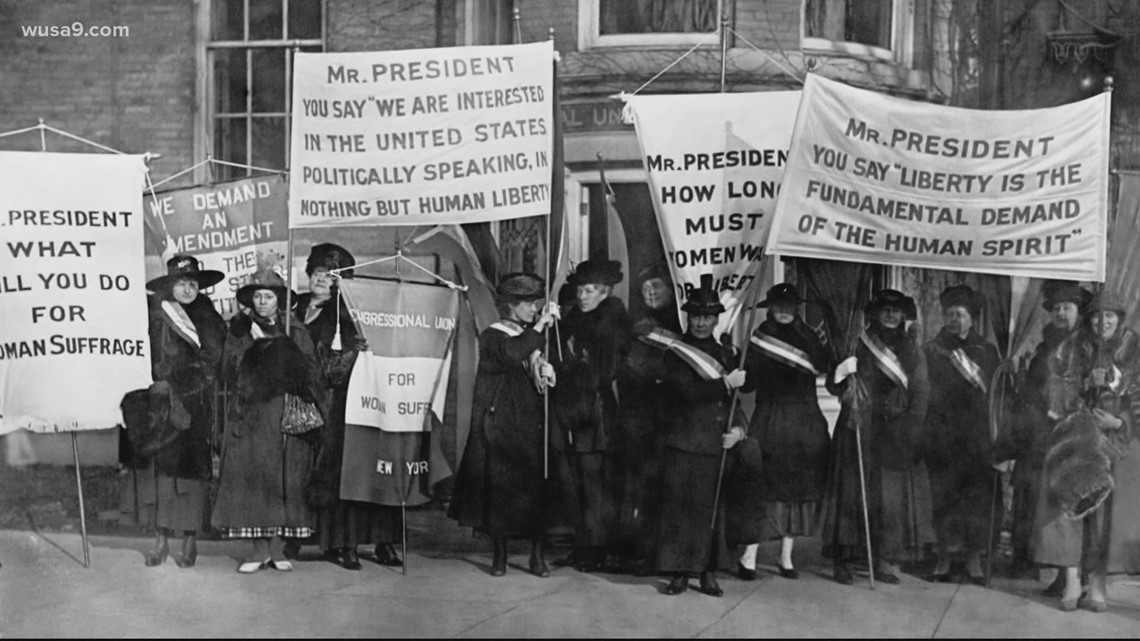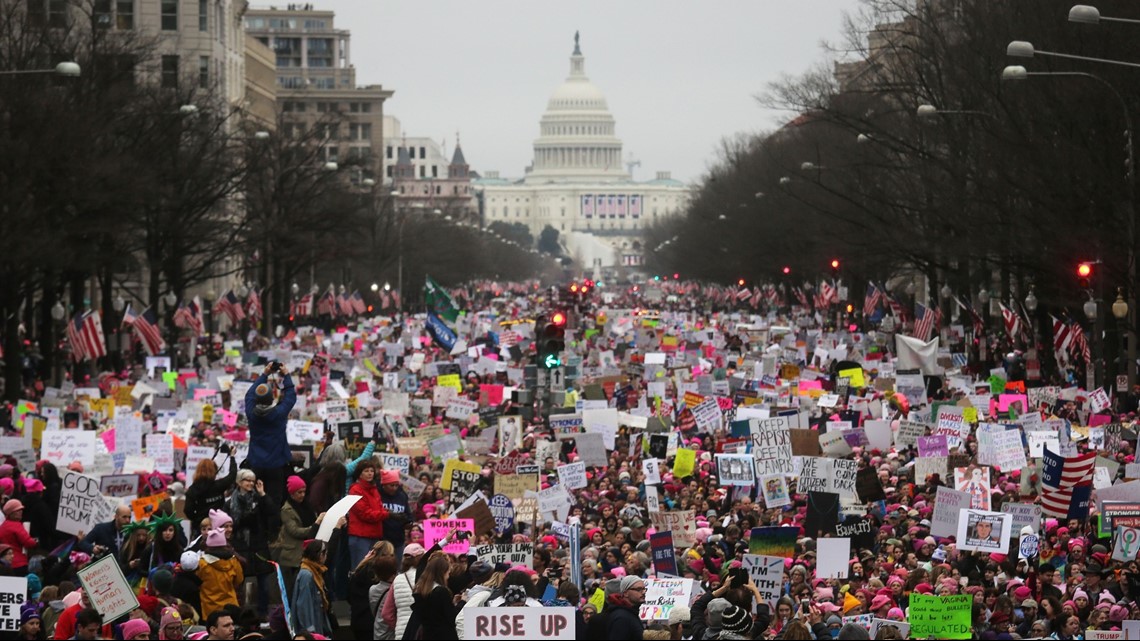WASHINGTON — Four years after the Women’s March made history in Washington DC, supporters will once again take to the streets this weekend.
This year, thousands of people will meet in front of the Supreme Court, several weeks ago the late Supreme Court Justice Ruth Bader Ginsberg laid in repose.
In order to better understand the significance of this year’s March, Jennifer Herrera with the National Women’s History Museum shared some of the historic moments leading up to this point.
“The origin of marching in Washington really started in 1913 with the March for Women’s Suffrage,” said Herrera.
In images dating back more than 100 years, the 1913 March for Women’s Suffrage showed women fighting for the right to vote.


“It was 8,000 women marching through the streets of Washington DC the day before President Woodrow Wilson‘s inauguration,” said Herrera.
The 1913 March for Women’s Suffrage brought together women from across the country.
“That march, it wasn’t just a march. They wanted to make it into a spectacle. They wanted to show the full scope of women and to capture attention however they could,” said Herrera.
“What you also saw happen during the parade was violence. Sometimes people standing by and watching would see these women that were marching get attacked. What that led to eventually was actually more media coverage so the suffrage movement stayed in the public consciousness far beyond that parade,” said Herrera.
Herrera said the march set the precedent for future protests across Washington D.C. and was even re-created at the Women’s March in 2017.
“I was at the march in D.C. and it was really inspiring. I would see a lot of women wearing the suffragist sash. The women were still demanding change, women were still fighting to be heard, fighting for equality and fighting for representation. It’s powerful when women come together and fight for change,” said Herrera.


The 1963 March on Washington marked another monumental time for women’s voices.
“Going into the Civil Rights movement, you continue to see more and more people what we call, standing up for change,” said Herrera.
“I look at the history of the Civil Rights movement and the women who were there organizing and leading the charge after not getting a space on the stage but certainly doing the heavy lifting,” said Herrera.
As we look ahead to this year‘s Women’s March, Herrera said representation is important.
“When you have inclusion in these marches, when you have inclusion on the stage, when you have inclusion in the press or in the history books, you have a more complete history. So, it is really important that all voices are represented because if you’re not being represented, then you are not being heard,” said Herrera.
“When you have a more complete understanding of what happened, you are able to really understand the full picture of a time, a current event and the people who work so bravely and courageously,“ said Herrera.
To learn more about the National Women’s History Museum click here.

